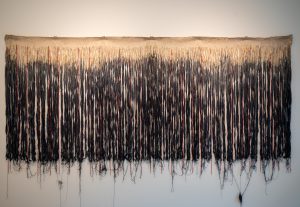Margot Harrington is a designer, but even as I write that statement it seems inadequate. While she has worked on and led projects centered around shaping websites, creating brands, dreaming up site-specific installations, and composing publications, the way she speaks of her work makes it clear that her design practice isn’t simply an occupation–it’s a lifestyle. Starting from her days growing up in a word and image-loving family in Minnesota, to now being a freelance designer with her company Pitch Union Design, an art director for Bitch Media, and a multidisciplinary artist, Margot’s design style has been developing and evolving in quiet and significant ways since before she was even exploring the question of what her lifework would be.
Given the fact that she is an artist with a wide practice that collides with a mix of experiences and influences, our conversation touched on a range of topics. We discussed everything from the ways we stumble magnificently in order to discover what does and doesn’t work for our lives, to the importance of eastern medicine and self-preservation for those who don’t have healthcare, and the degree to which we feel the pressure to perform queerness when it isn’t easily legible. And somewhere in between those things, we actually talked about design as she understands it and how it interfaces in the social, political, and economic climate that we’re currently in.
This interview was edited for clarity and length–and gives you only about a third of the conversation.
Tempestt Hazel: I’m a big fan of origin stories and the first experiences that shape artists early in and throughout life. Your career is largely centered around design work, and now you’re working on and have worked on several different types of publications. So I’m curious, what’s your first memory of magazines? Were there any that were formative for you, or that you always read or turned to for visual inspiration?
Margot Harrington: I come from pretty humble beginnings. My parents were super hardcore about reading. They would say, “Oh, you want a treat? Let’s get you a book.”
My grandparents had bought my mom a subscription to National Geographic, so my earliest memory of magazines was just flipping through those. My dad always got The New Yorker, and 1980s or early 1990s publications–most of which aren’t around anymore. My sister was really into collage, so she would cut all the magazines up. Remember when people used to do that? Just put text and photos over everything?
TH: Yes, I was one of those people!
MH: I think I was interested in image-making from a young age because they were always just around. Sassy Magazine was pretty formative for me. I read all my sister’s Seventeen Magazines when I was nine.
It was around then that I was learning about ‘zines. I grew up in the Twin Cities–Minneapolis and St. Paul–which is a super liberal area, though there are parts that are not. A town nearby was producing a pretty small, independently published magazine called New Moon, and it was a feminist magazine for tween girls, that tender young age. It was all written and produced by girls and their families. They had all different types of people coming in from all over the world. It was very much like a cool snapshot of what girls were into at that point.
I remember thirsting for those. I couldn’t wait for them to come in the mail. It prepared me for my teen years because it was real talk. A lot of other kid’s stuff at that time was like pandering, or cutesy, or super-femme. This was not like that. New Moon was running during that 1990’s grunge heyday, which is also what Bitch Media was ultimately born out of. Bitch started in 1996 in a co-founder’s house in Portland. New Moon had that same kind of grassroots vibe to it.
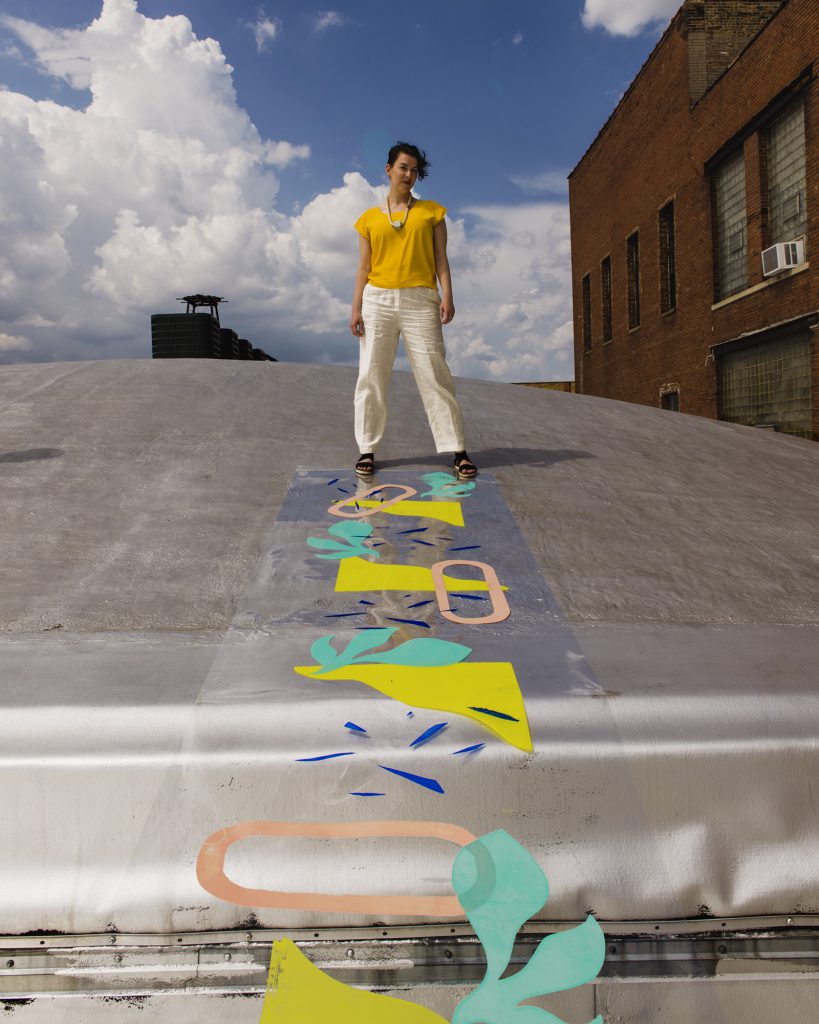
TH: How did you get into the kind of work that you now do?
MH: I have a combination of liberal arts education, art school, and one semester of journalism. When I started in journalism I remember specifically the journalistic tenet that says you’re not allowed to change the thing you’re reporting on or affect it. They said that you’re not right for this job if you know you couldn’t not intervene. That’s when I thought, “I’m not right for this job. I’m done.” How are you supposed to sit and let whatever the situation is unfold, [no matter the circumstances?] I thought to myself, “this is not for me, this is not my vibe.”
So, I transferred into the art department and started taking classes and just happened upon graphic design. I was terrified to become an artist because I didn’t think my ideas were interesting enough and I didn’t think I’d be able to fund my living. I was in that typical poor mindset that a lot of artists have and struggle with. I thought I needed to get a j-o-b, and figure out my life before I could decide what type of art I wanted to make and what I wanted to say in the world.
I ended up moving to Chicago randomly after I graduated because I didn’t want to move back into my mom’s house. I had $500 and two suitcases. I was babysitting and working retail. Eventually I got a design internship with Jayson Home and Garden and that was my first entry into the design world. It wasn’t the best fit. Then I got a different job in corporate food packaging in 2008. When the economy tanked they let half the staff go in one day.
At that point I knew that I was not about to get a full time job in an economy that was tanking, so I decided to be freelance. I started a blog at that point, which turned out to be a nice balance between the journalism, art, and design. The blog was a collection of what I’m into. It was how I could remember what I looked at and what I liked.
TH: So you’ve been freelance since 2008?
MH: Yeah.
TH: That’s amazing.
MH: Around that time, a few things happened. [My partner] Chad Kouri and I had been together for about a year at that point, but he was also recently self-employed. We both found ourselves hanging out with unstructured time, trying to be artists and designers and trying to live. That cemented our relationship. We figured out how to live and work together. We were forming patterns around each other. So we’ve been able to be each other’s consistent piece while having the stability to explore other lifestyles or types of work.
TH: You have such an interesting range of influences and interests, like Scandinavian design, Japanese aesthetics, and Chinese medicine. How do you infuse all of these together in your design work? Someone looking at your work might just experience a kind of minimalist design that contains these quiet influences without being aware of it, but they’re there.
MH: I take that as a compliment, because I think if I was recreating those influences too closely, I would worry that I was appropriating or mimicking something that comes from another culture.
My dad introduced to me to haiku when I was pretty young. We would email each other once or twice a week as a ‘how’s your day?’ and we would answer with a haiku. He introduced the concept of this, which also stems from other Japanese concepts and ideals, like wabi-sabi. Say you break a cup and you glue it back together. When you do that, the cracks become part of the history of this object. Instead of being a flaw, it infuses it with character. So as things age, these new characteristics add more meaning, energy, and vitality to it, as opposed to making it seem used and dirty. Things can be imperfect and that’s where the art is–that’s wabi-sabi and that’s a beautiful concept to me. Also it allows for accidental developments with the work, in the sense that you may not know where you’re going but you accept that if you have an ‘oops’ moment, that’s a place from which to build. When I started researching it myself, I found parts about it very challenging. But from it I learned that there’s an ideal frame of mind to be in when you do your work. Every artist has formulas for how they make work. These are what appeal to me. So, I use these concepts and influences and apply them to how I’m creating work. It’s going to come out of me in whatever way that it does. But it comes from being nested in that place. All of these influences make all of us complicated, interesting people.
I’ve always loved minimalism. It can be quiet. I don’t have to cover the whole canvas. To me, one line can be just as profound as a whole piece. There are pieces of that in Scandinavian culture and there’s pieces of that in Japanese culture. I try to find crossover in terms of other places in the world that I feel have a really strong affinity for intention with objects, intention with spaces, where intention is ingrained into the culture. Taking a more designed approach to life, in general, is something I’d love to see more of in our country.
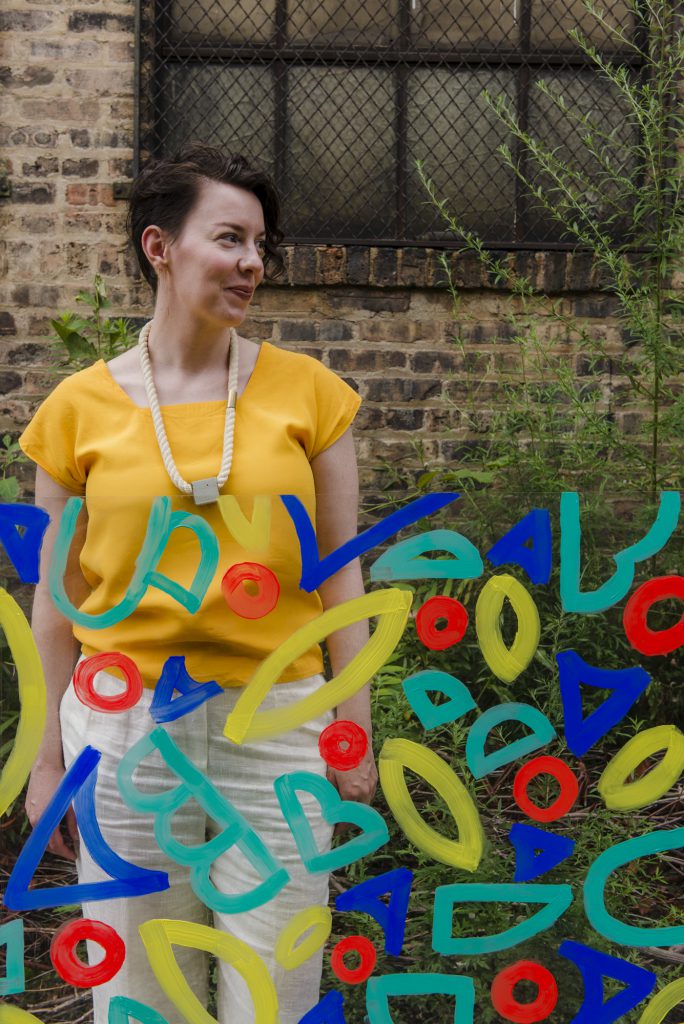
TH: So, I follow you on Twitter, and it’s clear that you don’t shy away from political and challenging conversations. Where does that vocal nature appear in your work under Pitch Design Union or with your work at Bitch?
MH: That’s such a hard question. The other two art directors for Bitch and I had a meeting with the board recently and they basically asked the same question because it’s not always apparent. There’s also no real hard and fast rules or guidelines.
Bitch has been very clear and serious about this and representation in general. And sometimes it’s impossible to represent everyone. So, we ask ourselves, how can we do something that is more abstract or universal so that it can speak to people without having to be so specific and limited in perspectives?
TH: Out of all the work that you’ve done up to this point what has been one of your favorite projects to work on?
MH: Sometimes I have tried to come up with a ranking system – you know, when the work is great, it’s doing something meaningful in the world, the pay is good, and the project stands for what I believe in.
TH: It checks all the boxes.
MH: Right. So, for example, working with the Tremaine Foundation on Exhibitions on the Cusp, I am pretty loosely involved with the website at this point since it’s all designed, but I’m on board with what’s being published. I’m reading it, making sure people get paid and I’m helping source imagery for it. It’s so similar to Bitch but it’s so different in the sense that it’s a one year project, it has a limited budget, there isn’t a lot of space for me to be spending a lot of time on it this year. But last year when we were building all this, I still feel the mission and goal of that project is attempting to do some really cool things in the world. It’s also been the first time I’ve ever worked with a foundation, or with a larger arts organization that not a lot of people know about but is respected in some circles. I feel like because I didn’t go to a fancy art school, and I don’t have an MFA, some of those connections are really critical for me if I want to continue working in arts, or in academia in general.
I would also say another favorite project was maybe about 5 years ago when Chad and I designed a book with Studio Gang Architects and the Art Institute of Chicago. Zoë Ryan was curating the show Building: Inside Studio Gang Architects giving a look inside their process. [For the exhibition], they included a whole section on process sketches, how they arrive at their ideas, research, the design solutions they’re presenting and where they came from. We basically did the exhibition catalogue for that show, which was really meaningful.
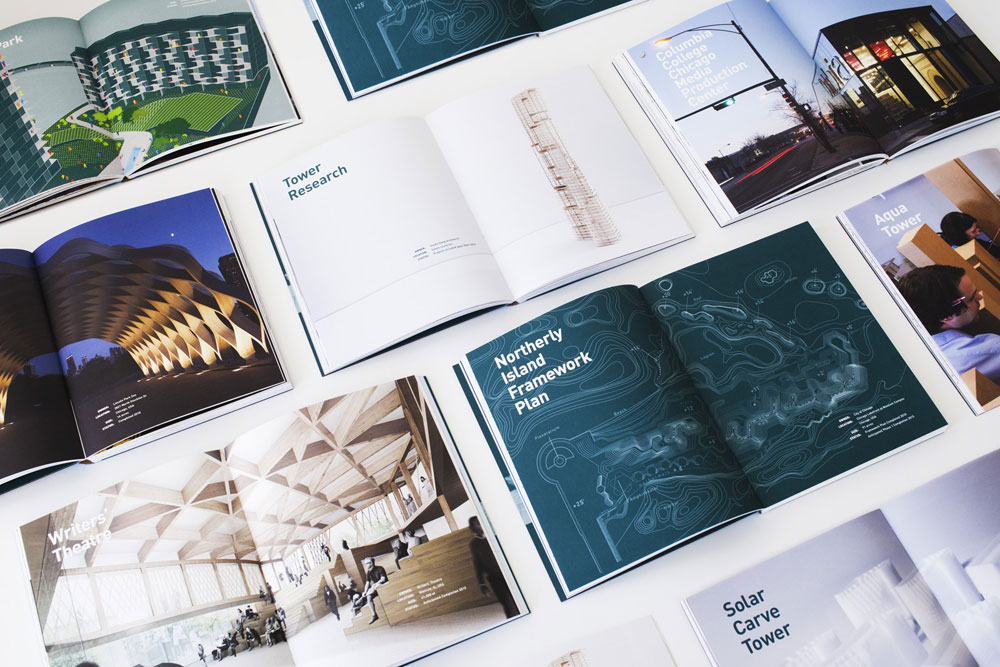
TH: You’re so versatile and so many different opportunities come your way. Does the question, “Can I do this?” ever come up when a new challenge arises? Do you enjoy chances to rise to the occasion because that’s just your style? Or is there something exciting or anxiety-ridden about that unpredictability and maintaining versatility?
MH: I think about that all the time. I know so many artists and so many designers who have one thing that they do which they’re known for and they’ve really built a career out of it. That really works for them. That way it’s easy to tell people what you do–it’s just a classic approach. I have just never been able to stick to one thing for that long. Even after a year of working on something I’m ready for a new challenge. I think it’s largely just how my personality is built.
Sometimes I do feel pressured to narrow down or really focus on one thing. But even if Bitch was the primary thing I worked on, I would still want to leave room for other investments in my creativity and also leave room for potentially teaching more. I think if I was to only be an art director, if I was only working with other people’s work, or commissiong them to do work, and seeing all this cool amazing stuff other people were doing and I wasn’t simultaneously making time for myself to create work, I think that would be really hard. And I feel that goes back to the conversation about mental health, physical health, and creative health. If I’m not also investing in myself, I can’t be supportive and open to other people’s work without getting jealous feelings or envy.
TH: I know, I get that way sometimes with Sixty. I always think about how I want to more time to explore my own curatorial and writing ideas, ones that are untethered to other people’s projects.
MH: Totally. Or even just going to other people’s shows and being wowed by their work. And thinking, will this ever be me? Everybody feels that way. It sucks. But it’s just part of being alive. I don’t know if I’ll ever be able to answer that question. But for now, for the most part I’m happy doing different things and bouncing around.
TH: That’s how folks operate more and more these days. It’s not just that individual artists have the desire to be versatile. But it’s almost as if it’s a two-way street. A lot of folks are asking the artists they work with to be able to do so much–wanting them to have so many different skills and tools in their toolbox. Specializing or focusing on one thing is becoming more rare.
MH: It’s a constant challenge. You’re pressured to be the Every-Person, or have a billion skills so someone could pay you the same amount as they would pay two people to do that job. If they could pay two people that’d be amazing–or at least pay one person time and a half! But I’ve also been doing this for 10+ years. If I didn’t learn new skills I’d be bored, or my work would be very basic, or derivative. If you’re interested in new things, and you have a lot of different things you’re interested in, you’re going to pick up stuff. And I think that’s just being alive and gaining experience. That’s why people who have more experience in a certain field should, in theory, be paid more, because you have that much more ability.
TH: What has been one of the biggest rewards of going independent? It couldn’t have been an easy decision to go freelance. I can imagine there is a long laundry list of the challenges, and we tend to focus on those things in situations like that. But I’m curious about what has been the biggest reward in making that decision. And if you would do something differently, now that you are a decade in, what would that be?
MH: The biggest reward? I feel super proud of the fact that everything in my life has been something that I have worked to create for myself. Even small things like the computer I work on. No one gave [Chad and me] anything. I mean, a few family gifts here and there. But it very much feels like we boot-strapped, saved and experienced some debt to get here and figured out how to be super resourceful. That is just as creative as any other piece of running a business. I can’t underscore how cool it is to say I did all of this. That’s great. There was no family money or a big job with a $20k check. That’s something I’m really proud of.
It’s also helped me challenge the typical day to day work habits that people have: get up, get on a train, go to work, 9-5, have lunch at noon. Those patterns, which I think can then lead to more pattern-based decision making in your life, in terms of what you’re supposed to do. You’re “supposed to” get married, to do x and y. I don’t have to do any of those things now. That feeling of life is really what you make it, you can design your life is a feeling that I hope never leaves me in terms of how many possibilities there can be. I don’t have to live my life in a certain way or follow societal norms just because that’s what most people do. I can do whatever I want. And that’s just freeing.
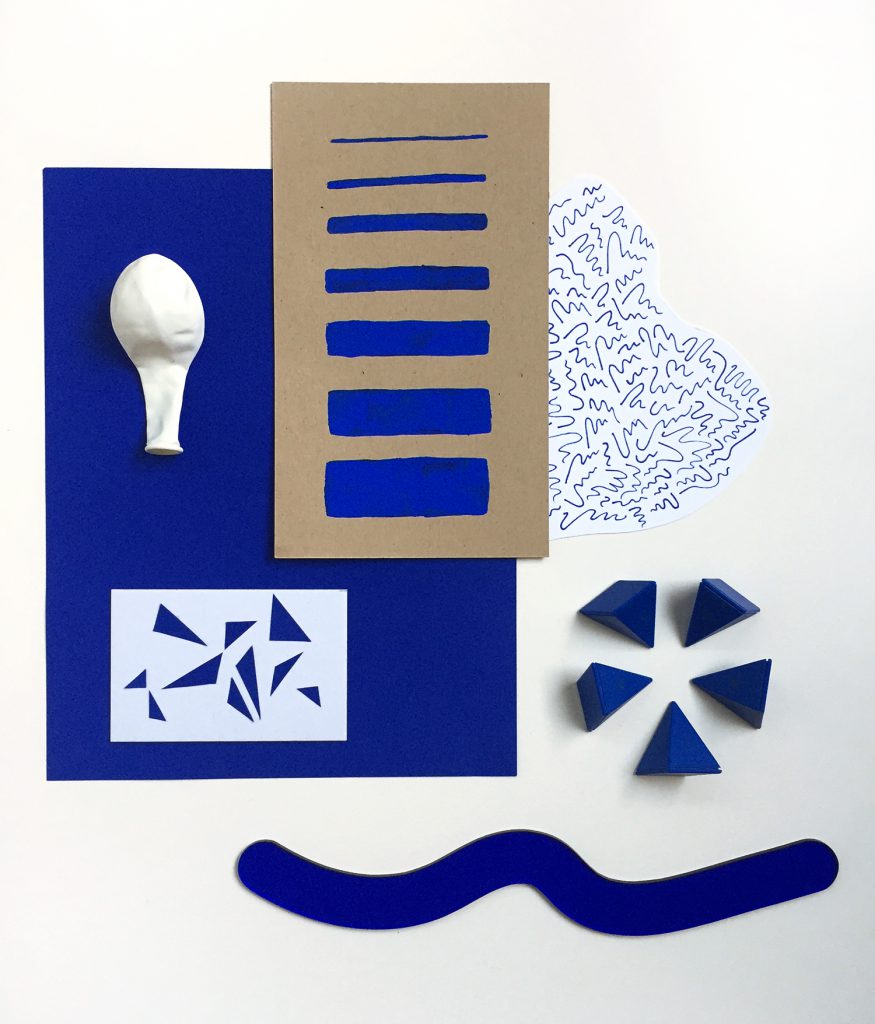
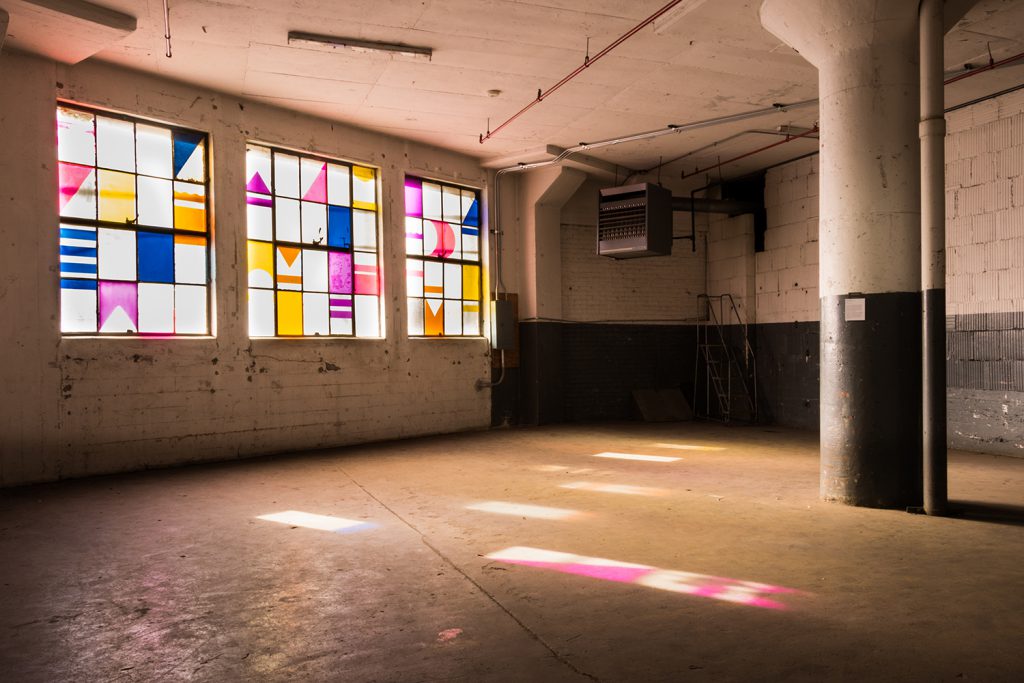
TH: So, if you could have an honest conversation with her, what would you tell the 2008 version of yourself? What does Margot 2008 need to know?
MH: Charge more money and start issuing contracts for projects. Even then, even though I had been working for a few years in the real world, I really didn’t have an idea of what real money was. So I ended up agreeing to do logos for people for $500, thinking ‘great, this will pay my rent!’. But then what? Maybe if I had more mentorship, or someone who sat me down and said, “put all these things for them in your contract that you already do for them anyway, just itemize it and tell people how you’re spending their money.” All it is is confidence and asking for what you want. I would rather get a yes and have the money, than get a no and be stressed out.
But also, I’d tell her to avoid working for a terrible client who doesn’t respect your decisions, but wants something right now. And also the understanding of what makes a good client. I wish I could tell myself that now, but that is also a hard one, from years of experience, trial and error, working with people who I didn’t feel great about from the beginning and just having to tough it out. That can be terrible, but sometimes you just have to pay the bills. If I had just charged more, and had better agreements about how I set up the work from the beginning, I think I would have been able to avoid some of those extremely poor periods of feast or famine and really hurting for the checks kind of life.
I wish I would’ve had someone to spell out how you charge, how to have a good contract, how to set up guidelines. Make rules for your business–how you want to talk to people, when you want to talk to them. Boundaries.
TH: I think that is a really important thing for people to hear–not just future designers but also clients. That’s something I think about all the time. Artists are devalued so much, are often expected to do so much under heavy restrictions, or are asked to push destructive boundaries. Or they are undervalued and underpaid. I think it’s really important for artists to realize and recognize that even though it might be nerve-wrecking, we’ve all got to be more honest about the value of the work and what’s being brought to the table, which is hard to say in a city like Chicago where we just have a critical mass of artists working, teaching, and studying here at any given moment. What you’re talking about is so important and it’s the type of thing that helps us to be a better community overall, on all sides of power dynamics.
On a different note, what role do you see designers playing in the political and creative climate we’re currently in?
MH: The people who tend to care about these things are already showing renewed or deeper interest in helping and being more outspoken. The 2016 election really changed a lot about how people think and speak–even in just the last several months with the #MeToo movement. I think people are feeling less encumbered by their opinions, in good and bad ways. Roseanne [Barr] is an example of that.
People are saying a lot more, in general, within Twitter feeds and social circles locally and I find graphic designers as a whole to be kind of inseparable from those conversations. We all have work to do. And I’m interested to see in the next few months, particularly in the next election and the primary in the fall, how people go from talking about action on Twitter to actually doing something.
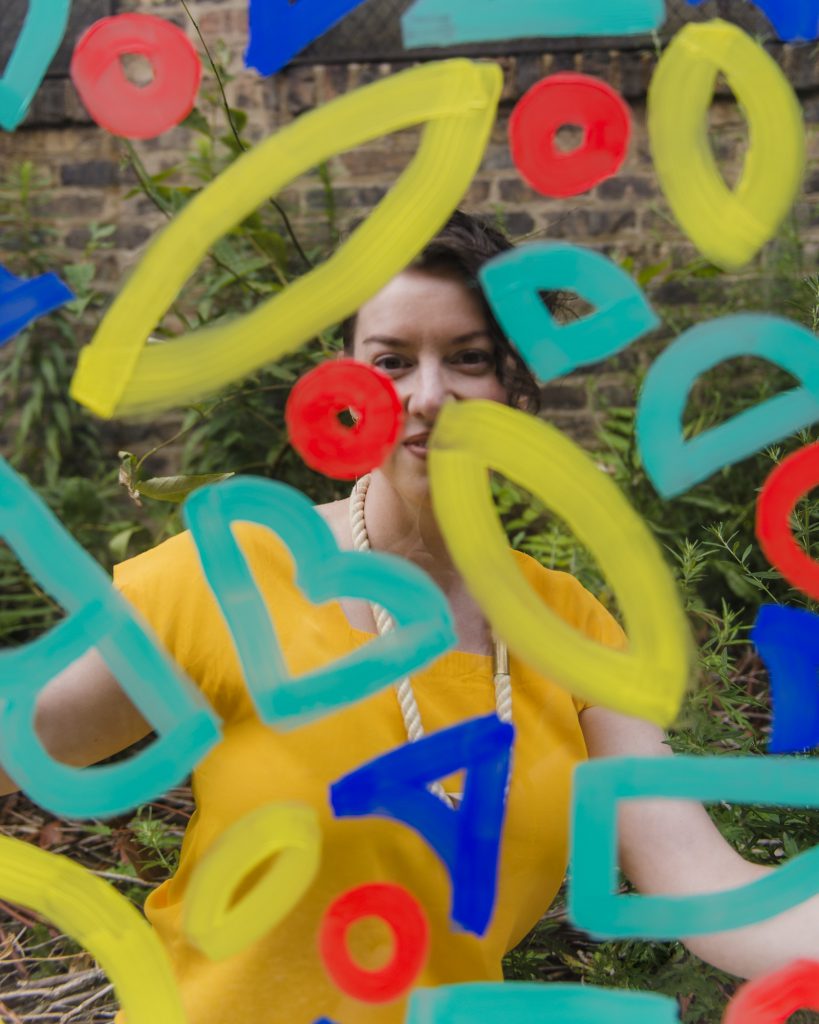
TH: Last question. This morning, when you started your day, what was something that was on your mind and that you carried into the day?
MH: Wow, that’s such a real question. Today, I woke up chewing on a thought–this doesn’t happen to me all the time, but usually if I have a thing that I feel unsettled about I’ll do some journaling about it or sit with it. We have this chair in our front room that faces windows overlooking a little park, and I call it the Feelings Chair, because it’s in the sunshine, in the early part of the day, and you’re like awake and not going to go back to bed but am not quite ready to face the world yet. So, I went and sat in the Feelings Chair with my journal and some tarot cards and really chewed on this idea: Right now Chad and I are in the middle of figuring out what our next steps are. But also, I’m queer, and in our relationship that has always been something sort of in the background. The extent to which I need to display that or perform that for people changes all the time, especially when you’re in what seems to people to be a straight relationship. That invisibility can be really stifling. And I’m always asking myself the question of whether I’m doing it for the culture, or if I’m doing it for me. Where’s that line? I was thinking about that really long and hard this morning.
Also, I think I’ve had some lingering birthday feelings, like, “I’m older now…I wish I had known this when I was 24!” But that’s life. You can’t go back. I wouldn’t be in this position now if I wasn’t that person then. I’m accepting that everyone has their own journey and this is mine.
__
Featured Image: Three similar portraits of Margot Harrington. In each image Margot is sitting with her knees up to her chest. In the first image she’s looking away from the camera, out of the frame. In the second she is looking into the camera from a side profile perspective. In the last image she is turned toward the camera, with one hand at her side. Photos by Ryan Edmund.
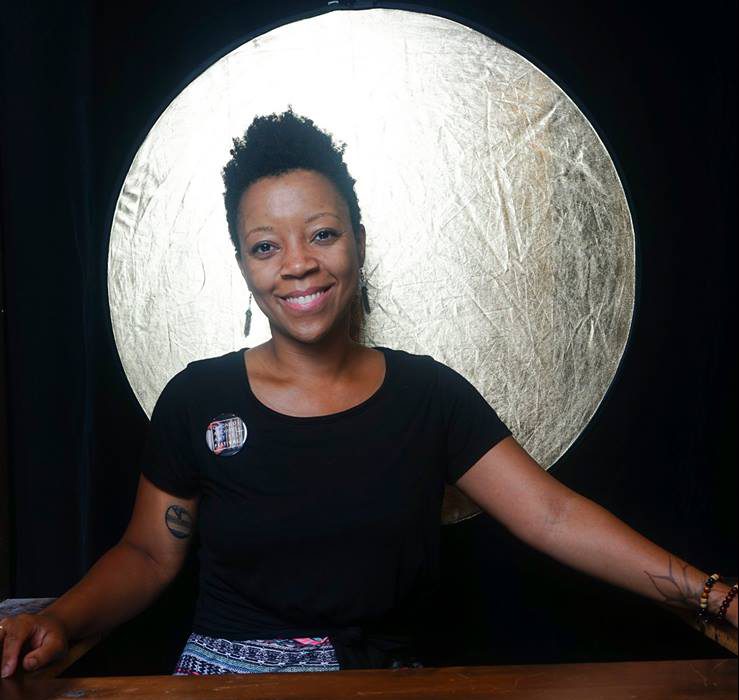 Tempestt Hazel is a curator, writer, and co-founder of Sixty Inches From Center. Her writing has been published by Hyde Park Art Center the Broad Museum (Lansing), in Support Networks: Chicago Social Practice History Series, Contact Sheet: Light Work Annual, Unfurling: Explorations In Art, Activism and Archiving, on Artslant, as well as various monographs of artists, including Cecil McDonald, Jr.’s In the Company of Black published by Candor Arts. You can also read her writing in the upcoming Art AIDS America catalogue for Chicago and the online journal Exhibitions on the Cusp by Tremaine Foundation. Find more of her work at tempestthazel.com. Photo by Darryl DeAngelo Terrell.
Tempestt Hazel is a curator, writer, and co-founder of Sixty Inches From Center. Her writing has been published by Hyde Park Art Center the Broad Museum (Lansing), in Support Networks: Chicago Social Practice History Series, Contact Sheet: Light Work Annual, Unfurling: Explorations In Art, Activism and Archiving, on Artslant, as well as various monographs of artists, including Cecil McDonald, Jr.’s In the Company of Black published by Candor Arts. You can also read her writing in the upcoming Art AIDS America catalogue for Chicago and the online journal Exhibitions on the Cusp by Tremaine Foundation. Find more of her work at tempestthazel.com. Photo by Darryl DeAngelo Terrell.







